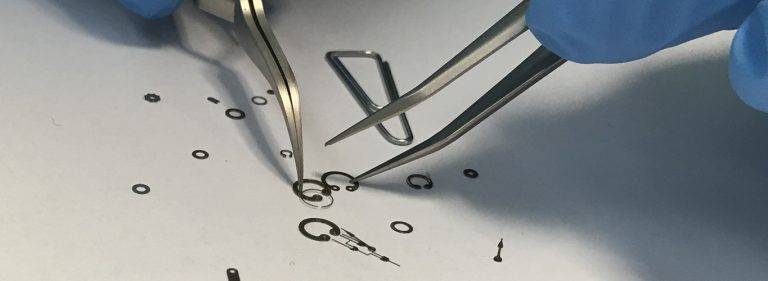[ihc-hide-content ihc_mb_type=”show” ihc_mb_who=”reg” ihc_mb_template=”3″ ]
[vc_row][vc_column][vc_column_text]Credit – www.3dprint.com
MicroMaker3D, part of innovation agency Callaghan Innovation, is the creator of Laminated Resin Printing (LRP), which it describes as a fast, easy and affordable way to create a wide range of 3D printed structures for applications such as electronics, wearables, sensors, Internet of Things devices and more. The MicroMaker3D team and its technology were selected as one of 10 exhibitors to be part of IDTechEx’s Santa Clara Launchpad.
Laminated Resin Printing, as described by MicroMaker3D, allows users to print submillimeter structures with complex geometries of up to 100 percent density, with low-layer thicknesses and with imaging speeds as quick as one second per layer, independent of complexity or density. Both single-layer and multi-layer structures can be printed, resulting in objects with high chemical and thermal resistance.
“Microfabrication – the production of very small high-value devices – is an export industry for New Zealand. Until now, however, making these miniature structures has been slow and expensive,” said Andrea Bubendorfer, one of the inventors of the technology. “By comparison, 3D printing has transformed how we make things, but it can’t operate on the small scale needed for microfabrication. We set out to develop ways to make microfabrication more accessible and are proud to have created a new technology that addresses the significant need for rapid prototyping on the microscale. And by small, we’re talking 5 microns. For context, a human hair is about 100 microns.”
A few of the possibilities with LRP include standalone planar structures; structures on paper, fabric and PCB substrates; printed electronic masks; miniature 3D prints such as microcomponents and MEMS springs; and overhang structures with elastic material for things like microsensor components. No cleanroom is required with the technology, and it can be scaled from prototype to production using the same materials. It is already being used to produce components such as shark skin and other textured surfaces; microwell plates; stencils, such as for microwave antennae; microfilters; patterned conductive tracks and encapsulated structures.
“This is a game changer where high-resolution, size, weight and durability really matter,” said Senior Business Development Manager Cath Andrews. “With the global miniaturisation megatrend underway, there is a rising demand for smaller components and detailing. The IDTechEx Launchpad is an ideal forum to talk to developers and innovators with a need for prints with high-resolution features and to talk with industry players interested in discussing the commercialisation potential of LRP technology.”
[/vc_column_text][vc_single_image image=”4151″ img_size=”full” add_caption=”yes”][vc_column_text]How LRP works is that extreme resolution modern dry film photoresist resins are imaged a layer at a time, using a fast-ultraviolet projection system, activating a photoinitiator. After imaging, each section of the dry film is laminated to form a multilayer stack. The stack is then heat cured through a precisely controlled catalytic cross-linking reaction in the activated areas forming a structure fully polymerised across and between layers, with no need for adhesives. The unpatterned resin provides support material for the printed structures, allowing for easy printing of complex structures like overhangs, membranes and moving parts.
LRP is a brand new technology, and like any new technology, it needs to prove itself in real-world applications. It does, however, have some big names behind it, benefiting from the input of additive manufacturing experts including Olaf Diegel and Johan Potgieter. According to the MicroMaker3D team, the technology has the potential to impact several major industries, including aerospace and medicine. LRP should be a technology to keep an eye on as it develops further.[/vc_column_text][/vc_column][/vc_row]
[/ihc-hide-content]
The AM Chronicle Editorial Team is a collective of passionate individuals committed to delivering insightful, accurate and engaging stories to additive manufacturing audiences worldwide.



